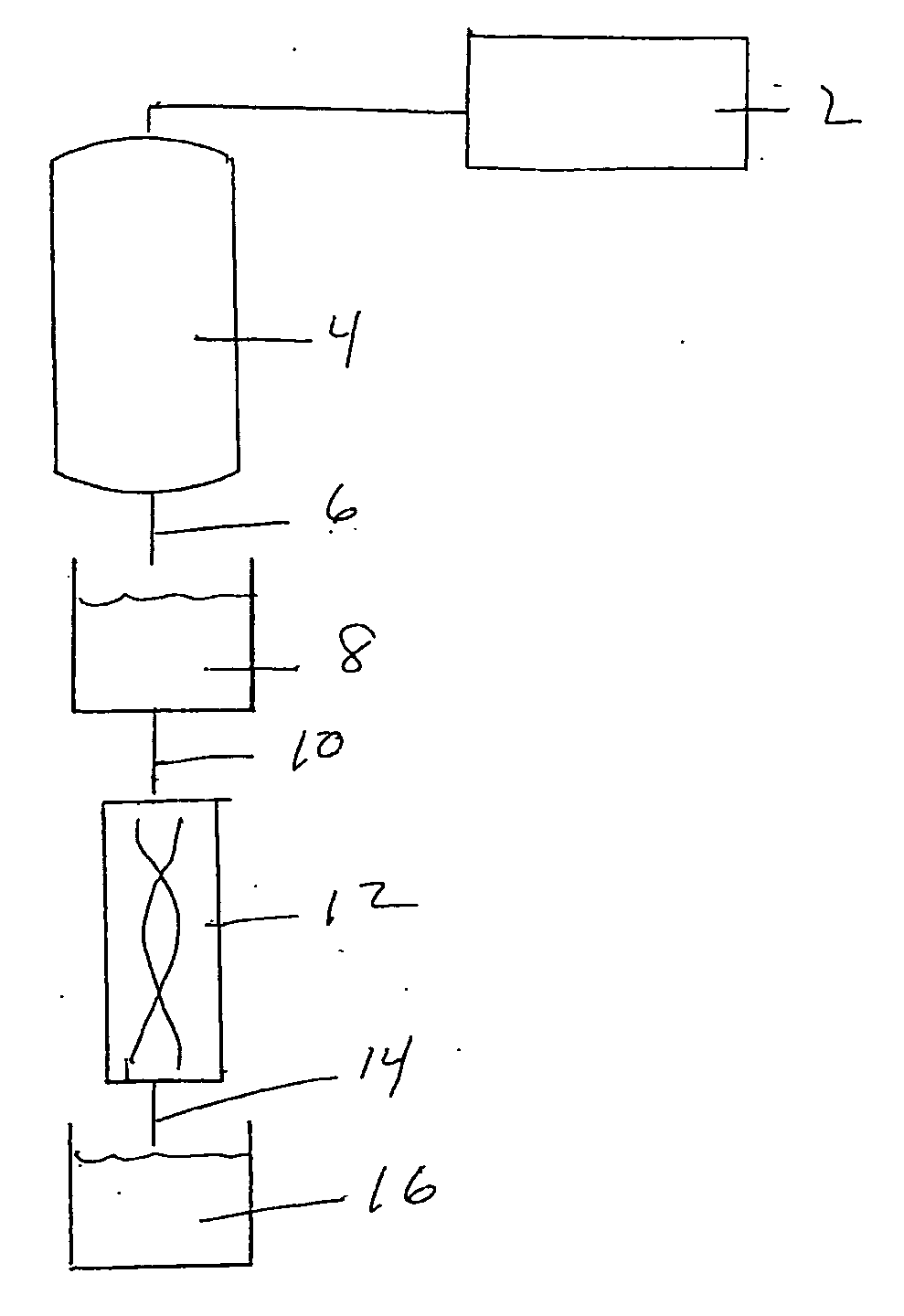Method and apparatus for making porous agarose beads
a technology of porous agarose and agarose beads, which is applied in the field of methods and apparatus for making porous agarose beads, can solve the problems of limited batch process throughput, high cost of explosion-proof equipment and facilities, and long heating and cooling time of big vessels like this. achieve high throughput, high single core yield, and compact in size
- Summary
- Abstract
- Description
- Claims
- Application Information
AI Technical Summary
Benefits of technology
Problems solved by technology
Method used
Image
Examples
example 1
Homogeneous Bead
[0122] 1000 ml of 6% agarose solution (D-5 Agarose from Hispanagar ) was added to 2000 ml of mineral oil containing 120 ml of Span 80 emulsifier in a first oil bath at 80° C. under constant agitation to obtain an emulsion in which the oil phase is continuous. The emulsion was then pumped through a 0.5 inch (12.7 mm) diameter, 6 inches (152.4 mm) long Kenics static mixer (KMR-SAN-12) at a flow rate of 3 L / min into a second bath of mineral oil at 5° C. Spherical homogeneous agarose beads were obtained with a largest particle diameter of 200 um.
example 2
Polystyrene Cored Bead
[0123] 300 ml of 80 um diameter, monosized, polystyrene spheres (Dynoseeds TS-80-13 from Microbeads) was mixed with 900 ml of 4% agarose solution (D-5 Agarose from Hispanagar) to obtain a slurry. The agarose-core mixture was added to 2000 ml of mineral oil at 80° C. containing 120 ml of Span™ 80 emulsifier under constant agitation to obtain an emulsion in which the oil phase is continuous. The emulsion was then pumped through a 0.5 inch (12.7 mm) diameter, 6 inches (152.4 mm) long Kenics static mixer (KMR-SAN-12) at a flow rate of 9 L / min into mineral oil at 5° C. The resulting core beads had an estimated coating thickness of 10 um and the bead population was predominately (>50% volume) single-cored.
example 3
Alkali Resistant Glass Cored Bead
[0124] 200 ml of alkali-resistant glass spheres of 100 um average diameter (Mo-Sci Corporation) was mixed with 200 ml of 6% agarose solution (D-5 Agarose from Hispanagar) to obtain a slurry. The agarose-core mixture was added to 2000 ml of mineral oil containing 120 ml of Span at 90° C. under constant agitation to obtain an emulsion in which the oil phase is continuous. The emulsion was then pumped through a 0.5 inch (12.7 mm) diameter, 6 inches (152.4 mm) long Ross ISG static mixer at a flow rate of 3 L / min into mineral oil at 5° C. The resulting core beads had an estimated coating thickness of 10 um and the bead population was predominantly single-cored (>50%).
PUM
| Property | Measurement | Unit |
|---|---|---|
| temperature | aaaaa | aaaaa |
| temperature | aaaaa | aaaaa |
| particle size | aaaaa | aaaaa |
Abstract
Description
Claims
Application Information
 Login to View More
Login to View More - R&D
- Intellectual Property
- Life Sciences
- Materials
- Tech Scout
- Unparalleled Data Quality
- Higher Quality Content
- 60% Fewer Hallucinations
Browse by: Latest US Patents, China's latest patents, Technical Efficacy Thesaurus, Application Domain, Technology Topic, Popular Technical Reports.
© 2025 PatSnap. All rights reserved.Legal|Privacy policy|Modern Slavery Act Transparency Statement|Sitemap|About US| Contact US: help@patsnap.com



